
MMIP Awareness Month: Honoring Lives and Raising Voices at the Ranch

May is MMIP Awareness Month, a time to honor Missing and Murdered Indigenous People (MMIP) and raise visibility around the violence impacting Native communities. At Yellowstone Boys and Girls Ranch, youth and staff gathered for a powerful vigil on Wednesday, May 14th, that brought this national crisis close to home.
Youth-Led Vigil Brings Focus to MMIP Awareness
Led by Mustang Nation—a youth-led cultural club through our Native American Services program—the event was held in the Chapel on campus. Youth and staff came together to reflect, learn, and take action.
The vigil raised awareness about MMIP, the risks of human trafficking, and the growing dangers of illicit fentanyl in Indigenous communities. To close the gathering, participants joined in a Red Sand activation—filling sidewalk cracks with red sand to symbolize those who have fallen through the cracks of systems meant to protect them.
Standing in Solidarity, Amplifying Awareness
Among those present were Mike Chavers, CEO; Josie Brady, Native American Services Coordinator; Charlie Sleeper, Mental Health Worker; Eric Thorson, Licensed Addiction Counselor; and MMIP advocates Yolanda Fraser and Justin Ras. Their presence reflected a shared commitment to standing with Indigenous communities and amplifying youth voices.
As we observe MMIP Awareness Month, we recommit to listening, learning, and taking action. Events like this remind us that awareness is only the beginning—what follows must be ongoing support, advocacy, and change.
Shirts Now Available to Support MMIP Efforts
Youth at the Ranch designed a T-shirt to raise awareness and funds in support of MMIP efforts. Proceeds from shirt purchases go directly toward advocacy and outreach.
Shirts are available through June 20th. Click here to order and support the cause.
Stay Connected
Stay tuned to our news updates for the latest from across Montana, and follow us on social media. You can find us on LinkedIn at Yellowstone Boys and Girls Ranch, Instagram at @ybgr_cares, and Facebook at Yellowstone Boys and Girls Ranch.

YBGR Celebrates MSW Carroll College Graduates

This spring, we’re celebrating teammates who put in the work—earning everything from professional certificates to master’s degrees, including our MSW crew at Carroll College.
Pictured above with Dr. James Petrovich, Director of the Master of Social Work Program and a YBGR board member, are:
- Katon Gerky, Targeted Case Manager in Harlem
- Jasmine Hansen, PR Coordinator
- Caitlin Cooper, Behavioral Specialist in Dillon
- Skyler Carroll, Program Manager at Jessie Grant Lodge
These graduates were recognized at Carroll College’s MSW Hooding Ceremony in Helena on Friday, May 9th.
Balancing Responsibilities & Pushing Forward
Each of these professionals balanced full-time jobs, family responsibilities, and challenging academic coursework—all while continuing to serve youth and families with heart and perseverance.
Their achievement is a testament to what’s possible when education is supported and aligned with purpose. At YBGR, we believe in investing in the people delivering critical youth mental health services across Montana. By creating opportunities for professional development, we expand access to care in our rural communities and strengthen our workforce from within.
Our “Grow Your Own” Program: Advancing MSW Careers & More
YBGR and Yellowstone Academy offer several pathways to pursue an MSW or other academic goals through our “Grow Your Own” initiative:
- University partnerships, such as those with Carroll College and Grand Canyon University, offer tuition discounts and flexible degree programs.
- Scholarships, provided by the Yellowstone Boys and Girls Ranch Foundation, help fund degrees and certifications.
- Student loan repayment grants support therapists currently practicing at YBGR or the Academy.
These supports help our team grow while expanding the care we provide to kids across Montana.
Grow Your Career While Giving Back
Looking for a meaningful career where you can grow professionally and make an impact? Join our team of caring people, preparing youth for life! Navigate to our Careers tab to explore our open positions.
Stay Connected
Stay tuned to our news updates for the latest from across Montana, and follow us on social media. You can find us on LinkedIn at Yellowstone Boys and Girls Ranch, Instagram at @ybgr_cares, and Facebook at Yellowstone Boys and Girls Ranch.

5 Tips to Help You Regulate and Respond to Others

When emotions run high, your ability to regulate—to effectively manage your emotions, energy levels, and behaviors—makes all the difference. It’s an essential skill, not just for your own well-being, but for navigating relationships with others in a way that builds trust and connection.
We all have moments when our feelings take over—when frustration builds or someone hits a nerve. In those moments, it’s easy to react. But when we pause, reflect, and respond with intention, we strengthen our relationships and model emotional balance for those around us.
How to Regulate Emotions & Respond to Others
Here are five simple, powerful tips to help you regulate in the moment and respond with clarity—not overwhelm.
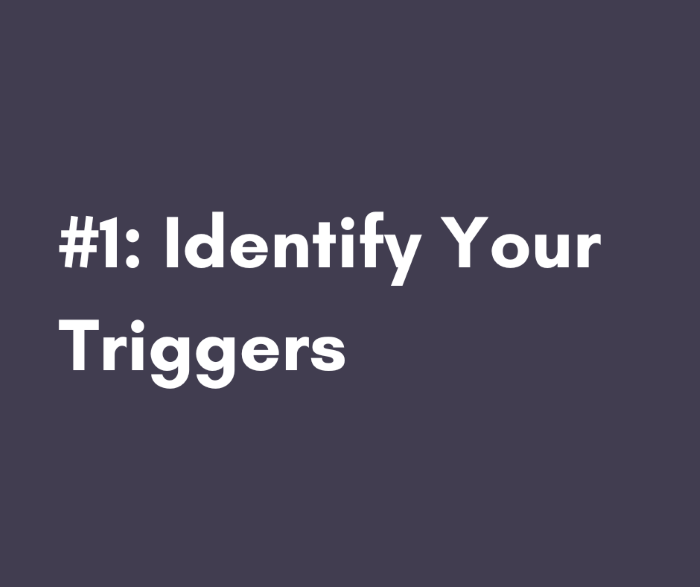
Identify Your Triggers
Start by paying attention to the patterns—those moments that consistently spark strong emotional responses. Do certain situations, tones, or topics light a fuse? Recognizing your triggers isn’t about blame. It’s about awareness. When you understand what’s setting you off, you’re better equipped to respond instead of react.

Pause and Breathe
When you notice your body or mind getting activated, give yourself a beat. Pause. Breathe. That tiny gap between stimulus and response? It matters. It’s where self-control lives. The goal isn’t to ignore what you’re feeling—it’s to create just enough space to choose how you want to respond.

Notice What You Feel
Emotions often show up in the body before the brain fully catches on. A tight chest. Clenched jaw. Restless legs. Be curious about those signals—they’re information. Tuning in to what you feel physically can offer insight into what’s happening emotionally.

Accept Your Emotions
There’s no “bad” emotion. Anger, sadness, fear—these are all natural parts of being human. Accepting your emotions doesn’t mean letting them run the show. It means acknowledging what’s present without judgment. Practicing self-compassion in tough moments helps us show up better for others and for ourselves.
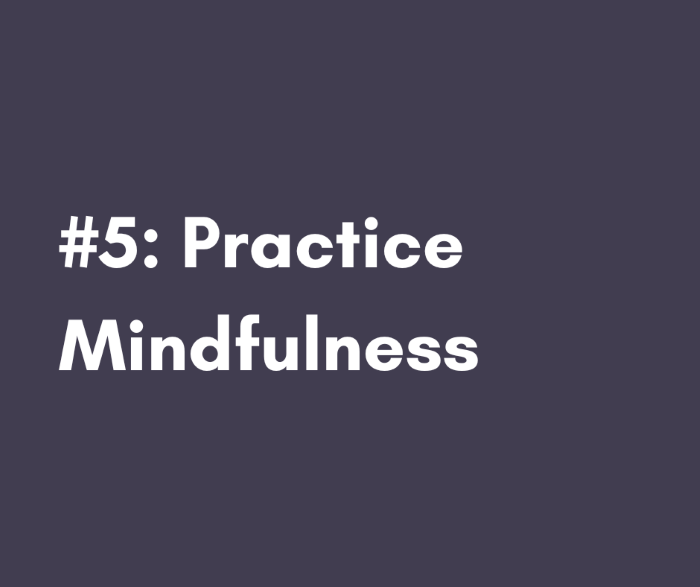
Practice Mindfulness
Mindfulness doesn’t need to be complicated. It’s simply about noticing what’s happening—inside you and around you. Use your senses. What do you hear? Feel? See? Returning to the present helps you stay grounded when emotions feel big.
The Bottom Line
Regulating emotions isn’t about stuffing them down or pretending everything’s fine. It’s about building awareness, creating space, and responding with intention. Whether you’re parenting a child with big feelings or navigating the complexities of professional life, these small shifts can have a big impact.
You won’t get it perfect every time—and that’s okay. But with practice, you’ll start to notice moments of calm where there once was chaos. And those moments matter.
Want More?
Check out the rest of our blog and follow us on social media. You can find us on LinkedIn at Yellowstone Boys and Girls Ranch, Instagram at @ybgr_cares, and Facebook at Yellowstone Boys and Girls Ranch.

How to Recognize Trauma Triggers in Kids and Respond

Trauma triggers can be easy to miss—especially in children. But recognizing them is key to understanding behavior, offering meaningful support, and helping kids feel safe.
What’s a trauma trigger? A trigger is a reminder of past trauma. It can set off an emotional alarm system, causing feelings of overwhelming sadness, anxiety, or panic.

Common Trauma Triggers
Our capacity to navigate our triggers and recognize them in children is critical to our ability to provide gentle guidance and help kids grow strong.
Common trauma triggers include:
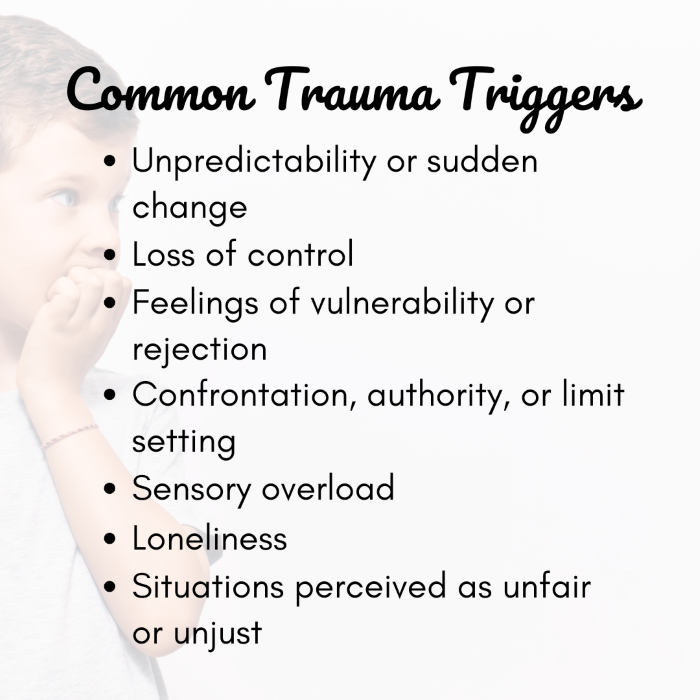
How Kids Respond to Trauma Triggers
A good indicator that trauma has been triggered is when response intensity doesn’t match the intensity of stressors or when behaviors seem confusing or inexplicable.
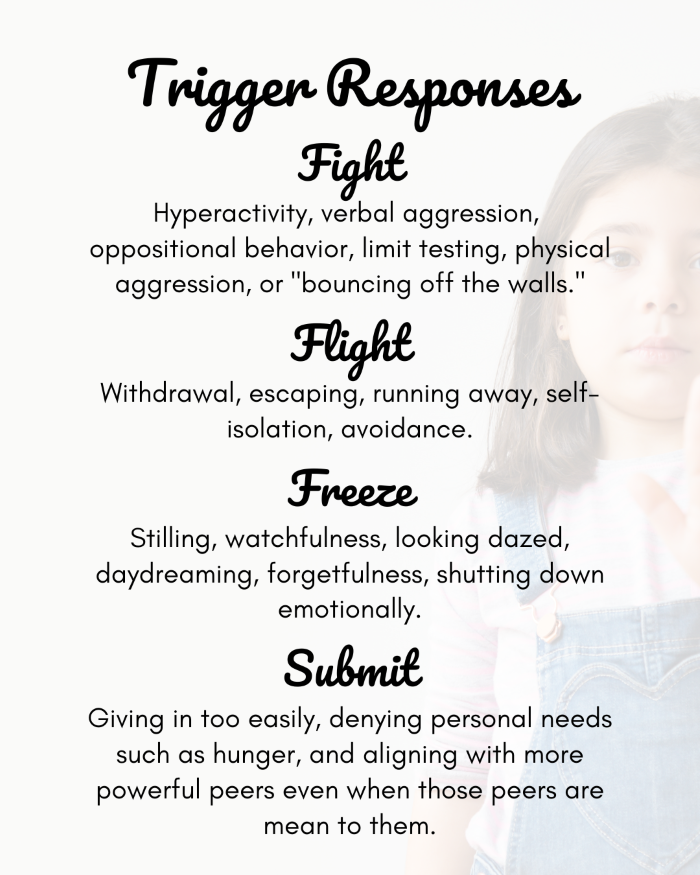
Look for Emotions Driving Behaviors
When navigating triggers, get curious. Look for the emotions driving behaviors and use mirroring as a tool for supportive conversations.
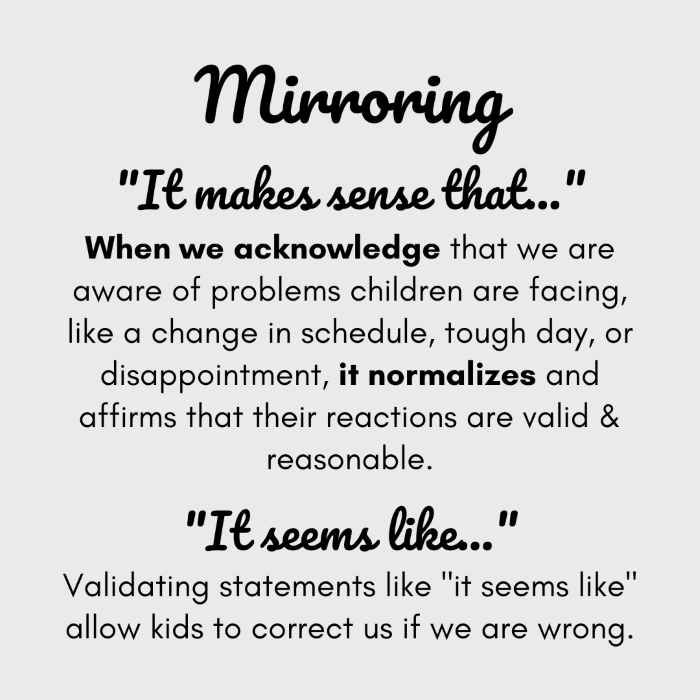
When we acknowledge we’re aware of children’s feelings & experiences, it’s normalizing. We don’t need to talk them out of their feelings—this kind of recognition is healing.
Did You Find This Article Helpful?
Check out the rest of our blog and follow us on social media. You can find us on LinkedIn at Yellowstone Boys and Girls Ranch, Instagram at @ybgr_cares, and Facebook at Yellowstone Boys and Girls Ranch.

Tribal Leaders Visit for Closer Look at Native American Services

In April, we had the privilege of welcoming tribal chairmen and council members from across Montana to the Ranch for a closer look at our Native American Services programming—a vital piece of how we deliver on our mission: Caring people, preparing youth for life.
Native American Services — Cultural Connection in Practice
Our Native American Services program weaves cultural connection into treatment at the Ranch—supporting healing, strengthening identity, and fostering belonging. From weekly smudging and cultural activities to classroom integration, Native heritage is part of everyday life for youth who choose to participate.
We welcomed guests with a smudge prepared for the occasion using a custom blend from Lunar Brambles, a small herbal business that provides ongoing support, free of charge, to Mustang Nation—a key part of our programming.
Shared Conversation and Commitment
The visit was led by Josie Brady, our Native American Services Coordinator, whose work anchors the program and creates meaningful opportunities for cultural connection at the Ranch. Under her guidance, the day included space for honest conversation, shared insight, and reflections on how we can continue to strengthen our work moving forward.
We’re grateful for the time spent together—and for the opportunity to walk alongside youth in ways that honor their culture and identity.
Stay Connected
Stay tuned to our news updates for the latest from across Montana, and follow us on social media. You can find us on LinkedIn at Yellowstone Boys and Girls Ranch, Instagram at @ybgr_cares, and Facebook at Yellowstone Boys and Girls Ranch.

17 Quotes on Helping Kids Navigate Anxiety

Do you have a child who struggles with anxiety? If so, you know that anxious feelings can shine through in several less-than-straightforward ways—making them, at times, tricky to navigate.
Common Missed Signs of Anxiety

Quotes Illustrating How to Help Kids Navigate Anxiety
Below are seventeen quotes illustrating childhood anxiety, its trajectory, and how to support kids.

Quote 1: Anxiety doesn’t always look like a nervous child. Sometimes it looks like a quiet, angry, or difficult child. – Unknown
Anxiety in kids can be easy to miss if we’re only looking for signs of nervousness. More often than not, it hides behind behaviors we misread—like refusal, irritability, or silence.
What looks like “bad behavior” is often the language of distress. Kids who feel out of control inside will try to find control in the only ways they can.
Anxiety is the brain’s alarm system working overtime—scanning for danger and often misfiring.

Quote 2: Anxiety is often masked by aggression. – @raisinghumankind
Aggression can be anxiety’s armor. When a child feels emotionally cornered, they may fight their way out by yelling, hitting, or pushing limits.
This isn’t defiance—it’s protection. Many children don’t yet have the language to express what they’re feeling, so their body speaks for them.

Quote 3: Consistent anger from a child is often a sign of overwhelm and anxiety. – Sarah Boyd
When a child seems angry all the time, it’s easy to assume they’re just being difficult. But anger, especially when it becomes a pattern, is usually a sign that something deeper is going on.
Here’s what’s actually happening: Their nervous system is overwhelmed.
Instead of moving through stress and returning to calm, their body stays on high alert—stuck in a state that feels unsafe, even if there’s no obvious danger. That constant tension builds, and it often spills out as anger. It’s not about bad behavior. It’s about a body and brain that can’t reset.
What kids need isn’t harsher consequences—it’s support. Tools that help them feel safe, calm, and connected.
Without intervention, that stress response pattern can hardwire itself, following kids into adulthood and shaping how they respond to the world. Understanding this doesn’t mean we excuse the behavior—but it does change how we respond to it.

Quote 4: Frustration, anger, and fear shut down the thinking parts of our brain. When your child is dysregulated, they cannot access the smartest part of the brain until their emotions are calmed. – Institute of Child Psychology
Ever tried reasoning with a child mid-meltdown? It’s like trying to explain taxes to someone whose house is on fire. The brain literally can’t take in logic when it’s in panic mode.
Psychologist Daniel Goleman called this an “amygdala hijack”—when the emotional center of the brain (the amygdala) senses threat and takes over, sending the body into fight, flight, or freeze.
When this happens, the thinking part of the brain—responsible for decision-making and problem-solving—goes offline. At that moment, our job isn’t to fix the behavior with words. It’s to help their body feel safe again.
Fewer words.
Slower breath.
Calm presence.
You’re not teaching—they’re not ready to learn. You’re just helping the storm pass.

Quote 5: Young kids can feel big emotions or think with logic and reason. But they can’t do both at the same time. Connect first. Then reason. – @loveandletgrow
Picture the brain like a ladder. At the bottom are survival instincts—big emotions, impulsive reactions, fight or flight responses. At the top is logical thinking. When a child is upset, they’re down on the bottom rungs.
Dr. Bruce Perry, a leading expert in childhood trauma, teaches that the brain develops and responds in sequence: first we regulate, then we relate, and only then can we reason. That means emotional safety comes before problem-solving.
We can’t ask kids to think clearly if their body still feels under threat. Connection—eye contact, empathy, calm presence—is how we help them climb back up the ladder.

Quote 6: Remember, nobody (child or adult) thinks clearly when emotions are high. Wait for the wave to pass before working through the issue. – Inspired by Krysten Taprell
There’s a time to teach, and it’s not mid-meltdown. Kids need the emotional wave to pass before they can reflect, reset, and try again.
Be patient.
Patience doesn’t mean ignoring the behavior—it means picking the right moment to address it. When a child is dysregulated, their thinking brain goes offline. Giving them a chance to settle first helps bring that part of the brain back online—so they can hear you.

Quote 7: Few adults are comfortable in the presence of a child’s anger. We see it as disrespectful, embarrassing, or threatening. That’s a problem because these outbursts are often nested in worry, confusion, loneliness, anxiety, jealousy, or insecurity. What would happen if we trained ourselves to see children’s anger as an invitation to get curious? What if we practiced stepping toward our kids rather than sending them away until they’ve pulled themselves together? – Deborah Farmer Kris
Big feelings in kids tend to stir up big reactions in adults. But attachment research tells us that when children are dysregulated, they don’t need space from us—they need space with us. Step in, not back.
Your calm presence shows them that emotions aren’t something to be ashamed of—and that they don’t have to face them alone.

Quote 8: When we try to talk kids out of their emotions, they feel like we don’t understand. So their anxiety will then “fight” to be heard. – Unknown
Telling kids to “calm down” or “don’t worry” can feel invalidating—even if we mean well. What they hear is, “You’re overreacting.” When kids don’t feel heard, their anxiety gets louder.
A simple “That sounds really hard” can go a long way in helping them settle. Emotional validation helps the brain feel safe, which is a prerequisite for problem-solving.

Quote 9: If you punish a child for what was actually a stress-induced behavior, all you’ll do is add to the child’s stress load and your own. – Dr. Stuart Shanker
If a child could do better in a challenging moment, they would. Behaviors driven by stress or fear aren’t calculated—they’re reactive. Responding with punishment often makes it worse. What helps is recognizing the signal and responding with regulation. This approach doesn’t remove accountability—it creates a pathway to it.

Quote 10: Children never choose the meltdown or any anxiety-related behavior in the same way that you never choose to have a meltdown in front of your family, colleagues, or friends. A meltdown is not a choice; it’s a byproduct of a brain that isn’t coping with something. And that brain needs to be showered in love, compassion, and safety. Not punishment, fear, or shame. – Allison Davies
No one wants to lose control—not kids, not adults. When a child is melting down, their system is overwhelmed. What they need is an anchor. Someone calm. Someone steady. Someone who reminds them that they’re still safe. The goal is to co-regulate first—only then can reflection and repair happen.

Quote 11: Rhythm and ritual decrease the unknown in a child’s day, which soothes the nervous system and results in fewer meltdowns and less hard-to-navigate behaviors. – Inspired by @raisinghumankind
Kids thrive on knowing what’s next. Ever notice how a breakdown is more likely when plans change at the last minute or routines get skipped?
That’s not a coincidence—it’s brain science.
Dr. Stephen Porges’ Polyvagal Theory explains that our nervous system is constantly scanning for cues of safety or danger. When things feel familiar and predictable, the brain relaxes. When they don’t, the brain prepares for threat.
This is why rituals and routines—like a morning goodbye hug or a nightly story—aren’t just nice traditions. They help calm the body and create the sense of safety anxious kids need to function well.

Quote 12: During high-stress moments or those of transition, provide kids with as much certainty and control as possible to reduce anxiety and increase their ability to cope emotionally. – Unknown
Transitions are fertile ground for anxiety. Offering small choices—what to wear, what book to bring—restores a child’s sense of control. When kids feel like they have a say, their stress load drops. And when they feel prepared, they feel safer.

Quote 13: Feeling out of control as a child creates a need to control as an adult. – @breakthecycle_coaching
When a child grows up in chaos—never sure what mood the adults will be in, or whether they’ll be praised or punished for the same behavior—they learn to brace themselves. Their nervous system stays on high alert, always scanning for what might go wrong. Over time, that constant tension can show up as anxiety, hypervigilance, and a deep need to control the world around them—because control feels like safety.
The CDC’s Adverse Childhood Experiences (ACE) study found that early experiences of abuse, neglect, and instability can significantly impact how the brain and body respond to stress. While the study doesn’t talk about control specifically, what we see in practice—and what other trauma research supports—is that kids from unpredictable environments often try to create order in whatever ways they can.
But here’s the powerful part: when we give kids voice and choice—when we let them feel heard and offer safe, predictable care—we help their nervous systems learn that not everything has to be a threat. We teach them that the world can be safe, and they do get a say.

Quote 14: People prefer the certainty of misery to the misery of uncertainty. – Virginia Satir
Cognitive Behavioral Therapy teaches us something important about anxiety: it feeds on unpredictability. When things feel uncertain or out of control, anxiety ramps up. That’s why kids often cling to what’s familiar—even if it isn’t working. The known feels safer than the unknown.
Virginia Satir’s words above couldn’t be more true for anxious kids. That’s why they may resist change, avoid new situations, or freeze when things feel uncertain. It’s not about defiance—it’s about survival.
The work isn’t to force them out of their comfort zone. It’s to stretch it gently. When we help kids tolerate discomfort—rather than avoid it—we expand their window of tolerance and help them build confidence.
Over time, they learn they can do hard things. And that’s when anxiety starts to loosen its grip.

Quote 15: If we allow kids to avoid the things they fear, they’ll enjoy the short-term relief of staying close to home and the long-term problem of continuing to feel fearful. – Dr. Lisa Damour
Avoidance brings relief—but only for a moment. Long-term, it feeds the fear. Supporting kids in facing fear in small steps helps them realize they’re more capable than they think.
Bravery isn’t fearlessness—it’s fear walked through. And every step builds the belief: “I can do hard things.”

Quote 16: If we want to help our children manage anxiety, we need to celebrate their bravery, not just their success. -Krysten Taprell
A child might not finish the race—but for some, showing up at the starting line takes everything. When we celebrate courage, not just outcomes, we reinforce what matters most: effort, resilience, and the belief that trying again is always worth it.
Highlight the process, not just the performance.

Quote 17: Feeling capable is a natural antidote to anxiety and depression in children and teens. – @drnicolebeurkens
Research on self-efficacy tells us that confidence is built through doing. Kids don’t need to be rescued from struggle—they need support while they move through it. The more capable they feel, the quieter their anxiety becomes.
Capability builds confidence—and confidence calms fear.
Did you find this article helpful?
Check out the rest of our blog and follow us on social media. You can find us on LinkedIn at Yellowstone Boys and Girls Ranch, Instagram at @ybgr_cares, and Facebook at Yellowstone Boys and Girls Ranch.

YBGR Butte Gathers to Honor the Past and Celebrate the Future

In April, our YBGR Butte team came together to mark a pivotal moment—celebrating the rebranding of their Community Office and two legacies now serving under one roof.
In a simple ceremony, we laid the old Youth Dynamics signage to rest—paying respect to the decades of care, connection, and hard work that built the foundation we stand on today at 775 W Gold Street.
YBGR Butte Honors Decades of Service
For years, 775 W Gold Street has been a steady presence for kids and families. Generations have walked through these doors—seeking support, finding connection, and building hope.
Both YBGR and Youth Dynamics have long histories of delivering care in Butte. Earlier this year, those paths officially came together—united under the shared mission: caring people, preparing youth for life.
What we celebrated was not the beginning but the continuation of that work—stronger, together, and reaching more youth and families than ever before.
The work started here is part of a much larger story—one still being written through every youth we serve and every family we support.
Expanding Our Reach Across Silver Bow County and Beyond
Today, our reach is more expansive, and our roots are deeper. From the Ranch to group homes to community-based services, our teams stand with kids at every step—building resilience, delivering hope, and creating strong foundations for the future.
We’re grateful to every team member who makes this work possible. Together, we’re making an impact that will ripple through future generations of children and families.
Stay Connected
Stay tuned to our news updates for the latest from across Montana, and follow us on social media. You can find us on LinkedIn at Yellowstone Boys and Girls Ranch, Instagram at @ybgr_cares, and Facebook at Yellowstone Boys and Girls Ranch.

4 Tips to Help Kids with Anxiety

Does your child wrestle with fearful or anxious feelings? If so, they’re not alone! Anxiety is common. In fact, it’s one of the most frequent mental health issues children face.
Surveys show that in 2021, 30-40% of kids grappled with feelings of anxiousness. And as parents, it’s essential we know how to support them.
Here are some signs of anxiety in children to look out for:

Do any of the signs above sound familiar? If so, we want to help! Here are a few tips on coaching your child through anxious feelings.
How to Help Kids with Anxiety

Tip #1: Relax their environment
Anxiety is a powerful emotion, and kids who grapple with it can easily get overwhelmed. One of the best things you can do when your child is feeling anxious is to reduce sensory stimulation, activity commitments, and pressure on their performance.

Tip #2: Help them name their worries & fears
When children have a good understanding of their feelings, they’re better able to cope with them. And that’s backed by research! In 2003, a study found that kids who could label their emotions in first grade had fewer anxiety symptoms four years down the road.
So, how does labeling emotions work? When kids name their feelings, it reduces the physiological stress response and shame attached to them. It also normalizes the human experience and helps them develop a healthy EQ.

Tip #3: Coach them to be brave
The only way to overcome fear is to face it. If we consistently run away from what makes us anxious, our anxiety only grows.
Support your child in confronting their fears, but make sure to move at a pace that feels comfortable and remind them – “You can do hard things.”

Tip #4: Reach out for support
Is your child struggling? If so, we’re here to help! With everything from therapy to in-home caregiver support and more, we provide services tailored to the unique needs of each child we serve designed to empower families in treatment.
Contact us online to learn more about getting your child support through any of our locations across Montana.
Did you find this article helpful?
Check out the rest of our blog and follow us on social media. You can find us on LinkedIn at Yellowstone Boys and Girls Ranch, Instagram at @ybgr_cares, and Facebook at Yellowstone Boys and Girls Ranch.

Strengthening Families Month— Stronger Families, Stronger Futures

Did you know that April is Strengthening Families Month? It’s a reminder that building a strong, resilient tomorrow starts with investing in families today.
At YBGR, strengthening families is at the heart of everything we do. Every service we offer—whether it’s delivered in the community, our group homes, or at the Ranch—is designed to strengthen connections, build resilience, and equip kids and caregivers with the tools they need to thrive.
Last year, we showed up for more than 3,600 youth and their families—delivering critical care that touched lives across nearly every corner of Montana. Behind each number is a story of hope, healing, and strength—the result of a community rallying around kids and families when it matters most.
Every connection we build today creates a stronger foundation for tomorrow. When kids have stable relationships, practical skills, and caring support systems, they’re better prepared to navigate challenges, achieve their goals, and contribute to stronger communities.
How We Strengthen Families Across Montana
From crisis intervention to ongoing skill-building and beyond, our continuum of care is built to meet families where they are—walking alongside them every step of the way.
Whether we’re supporting a family through a challenging time or helping kids develop skills that last a lifetime, the focus stays the same: strengthening families to strengthen futures.
Our teams work in homes, schools, and communities across Montana, delivering care that helps families stay connected, build resilience, and move forward with confidence.
Learn more about the care we deliver across Montana.
Stay Connected
Stay tuned to our news updates for the latest from across Montana, and follow us on social media. You can find us on LinkedIn at Yellowstone Boys and Girls Ranch, Instagram at @ybgr_cares, and Facebook at Yellowstone Boys and Girls Ranch.

Butte Community-Based Services Brings Easter Joy to Youth and Families
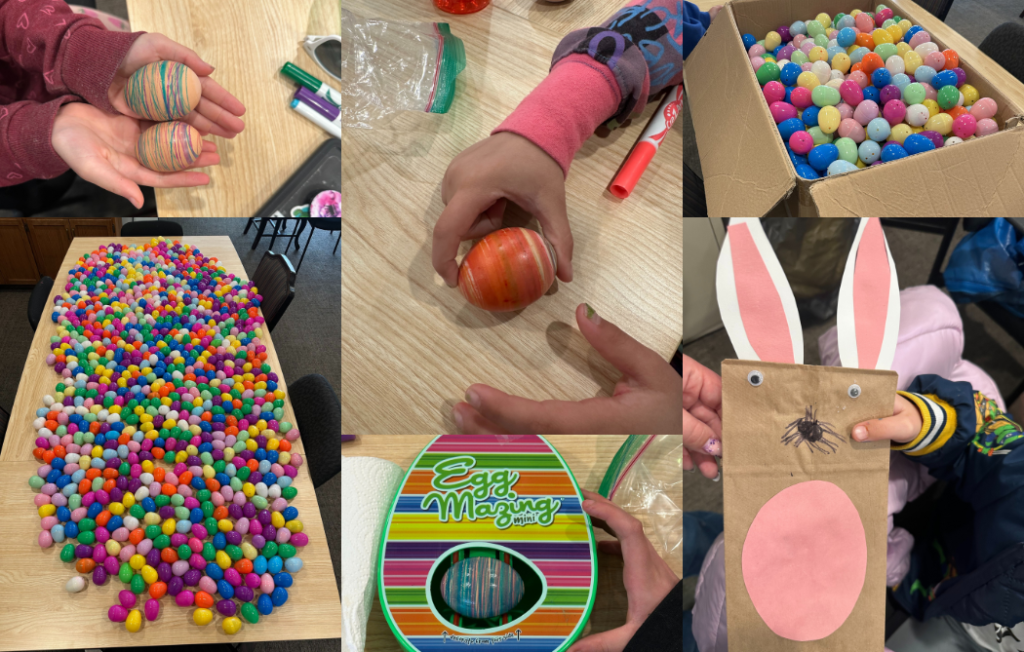
Earlier this month, our Butte community-based services crew brought Easter to life for the youth and families they serve.
The team organized egg hunts at the park, hosted crafts and games at the office, and even made hand-dyed eggs—courtesy of Madelin Speer, Targeted Case Manager, and her chickens. Our kids spent the day laughing, creating, and connecting with each other and the caring adults around them.
Simple moments like these leave a real impact. They build positive memories, strengthen trust, and remind kids they are seen and valued.
Celebrating Connection and Community
In Butte, our team creates spaces where youth feel connected, supported, and seen.
Activities like these give kids a chance to experience joy, connection, and moments of celebration. They strengthen trust, build resilience, and help youth keep moving forward with confidence.
Beyond the holidays, our Butte community-based services team works daily to strengthen families, build skills, and support youth in staying connected to the people and communities that matter most.
Thank You to Our Butte Community-Based Services Team
We’re grateful to our Butte team for bringing heart, joy, and connection to the kids and families we serve. No doubt, their care and commitment makes a difference.
Stay Connected
Stay tuned to our news updates for the latest from across Montana, and follow us on social media. You can find us on LinkedIn at Yellowstone Boys and Girls Ranch, Instagram at @ybgr_cares, and Facebook at Yellowstone Boys and Girls Ranch.
